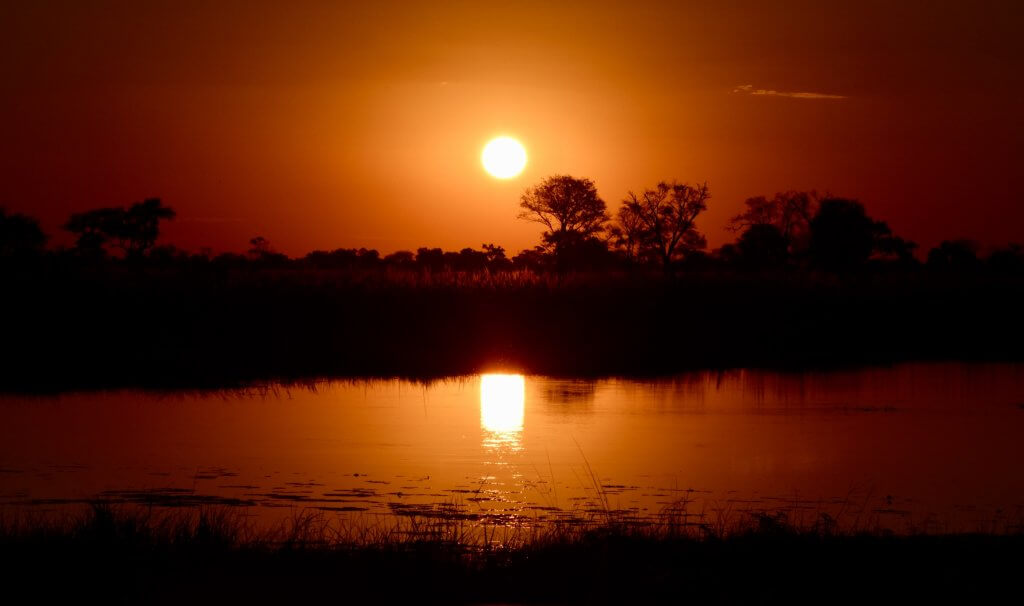Do Diamonds Come from Coal?
Key Takeaways
- Diamonds are the product of carbon atoms, which once existed many, many miles below the earth’s surface.
- Coal is primarily formed of carbon, and the result of ancient plant life that has long since decayed into the earth, and re-formed as coal.
- Diamonds are not a by-product of coal, and it simply is not possible to turn coal into a diamond.
- While diamonds are related to coal, their tight atomic structure makes them transparent, and totally unrecognizable from coal or graphite.
- There is a fascinating relationship between diamond, coal, and graphite, but not one that’ll reap any major rewards for you.

In short, no, diamonds do not come from coal. They do, however, share an unbreakable link.
It’s one of those things people say – usually when they’re trying to make you feel better about a workload the size of Everest, or a looming deadline: think of it this way, if coal is put under enough pressure, it turns into a diamond. Unfortunately, you’re the coal in this situation – and, if you’re listening to any gemologist, scientist, or natural history enthusiast out there, you’re never going to morph into a diamond.
Sorry about that.
But, even if diamonds and coal do not represent two stages of the same journey, they are intrinsically linked. We’re not saying you’re going to want to superglue a lump of coal to a gold band, get down on one knee, and tell your girlfriend that you’ve pretty much bought her an engagement ring, but there might be one or two gemologists, scientists, or natural history buffs who get a slight kick out of it (at best).
Here is everything you need to know about the differences between diamond and coal.
Diamond vs Coal
Where do diamonds come from?
Originally, diamonds come from the earth’s upper mantle, which lies around about one hundred miles beneath your feet.
To put that into perspective, that’s more than fifteen times deeper than the Mariana Trench, or about a one and a half hours’ drive straight down toward the center of the earth.
As you can imagine, the conditions in the earth’s mantle are beyond inhospitable. The heat from the earth’s core radiates through, creating unimaginable temperatures the deeper you get, while the pressure of tons and tons of rock and dirt above create tremendous pressure on everything below.
This is where diamonds were made, and it all began with the element carbon.
Alongside oxygen, nitrogen, and hydrogen, carbon (known on the periodic table as ‘C’) is one of the building blocks of life. It surrounds us in many, many different ways at all times, combined with other elements or, sometimes, on its own.
Carbon is the sole element required for the creation of diamond. True, no diamond is 100% carbon – thanks to the earth’s not-so-organized approach to creating diamonds – but nothing else is needed.
Every natural diamond starts out at a carbon deposit buried deep underground. Subjected to the high temperatures and intensive pressures of the mantle, each carbon atom is forced closer and closer to the next until, eventually, the atomic structure changes. A rigid, tightly-packed structure arranged ‘tetrahedrally’ (meaning that each atom is attached to four others).
The result is a stone harder and tougher than any other natural substance. Rough diamonds often form in a shape known as an octahedron (an eight sided shape, like two pyramids placed base to base) but they can also form as cubes, ten sided ‘dodecahedrons’, or even 42-sided shapes. They have a cloudy, dull, and sometimes oily appearance, and may appear totally white (colorless) or any number of colors. Yellow or brown are the most common – clear is the most popular – while pink and red are the rarest.
If you want a more in-depth explanation, take a look at our guide to how diamonds are formed.
Where does coal come from?
Coal deposits are the remnants of plants that lived an incredibly long time ago. If you’ve ever looked at a burned piece of wood, then you may have spotted some similarities between that and a lump of coal – and for good reason.
While coal doesn’t look anywhere near as impressive as diamond – and, admittedly, is worth a fraction of the cost – it’s actually pretty fascinating in and of itself. Like diamond, it is the result of a long chain of events established and governed entirely by nature, and results in a substance unlike any other.
Coal is a sedimentary rock that started life as tropical plant life covering massive areas of land during the Carboniferous period, but also from more recent periods like the Mesozoic. When this plant life died and decayed, it formed a thick layer of peat (or turf) on the surrounding land and, eventually, was buried under more and more layers of earth.
As you can imagine, the more earth piled on top of it, the more pressure that layer of peat was subjected to. The deeper underground it got, the higher the temperatures it was exposed to. Over the course of many, many years, the combination of heat and pressure created coal (a process aptly known as coalification). Water and other elements were replaced with higher concentrations of carbon. The darker the coal, the deeper it was buried, and the more intense the conditions.
Areas with a high concentration of coal are known as coal forests, and indicate parts of the world that were, all those millions of years ago, covered in lush, fertile, tropical forests.
Coal is primarily carbon, but it always contains other elements, too. Only diamond, graphite, and a substance known as carbon black can feature pure carbon – although, as we mentioned above, the overwhelming majority of natural diamonds feature traces of other elements, such as nitrogen.
So, do diamonds come from coal?
No. Diamonds are composed of carbon, while coal is composed mostly of carbon.
Interestingly, most of the world’s diamonds are thought to pre-date coal by an incredibly long time. By many estimates, plant life appeared on earth around 500 million years ago, whereas most natural diamonds are between one and three billion years old.
Diamond vs Graphite
We all know graphite – most of us, even better than we know coal. Again, it’s got a close-knit relationship with diamond – shared ‘DNA’ that can blur the line between one and the other if you’re not sure about the differences.
What is graphite?
Graphite is a form of crystalline carbon, just like diamond. Unlike diamond, however, graphite is a black, soft mineral with a metallic sheen.
Graphite has many different uses. The most obvious is, of course, in pencils, but it’s also commonly used in electronics and batteries, thanks to its high conductivity.
Where does graphite come from?
Natural graphite can form in a number of ways. It can form in metamorphic rocks as a result of high heat and pressure, in volcanic (igneous) rocks, or in meteorites.
It’s a pretty common mineral. As a result, it has been found in sites located all over the world (and outside of it). It is commonly found in ‘veins’ – the result of its formation underground.
How are graphite and diamonds different?
Unlike coal, graphite is pure carbon, but it’s still a totally different mineral.
While it may sound like something out of a 1980s horror movie, graphite and diamond are known as polymorphs – two different minerals that share identical chemistries. Both are totally composed of carbon, but, as with the lump of coal, we wouldn’t recommend you go down on one knee and offer the love of your life a stick of graphite.
That tetrahedral structure we mentioned diamond having – where each atom is attached to four other atoms – is not found in graphite. In graphite, each atom is attached to just three other atoms of carbon. We won’t get into the specifics here, but it’s handy to know that diamond’s atoms are arranged in 3-dimensional structures – rigid, infinite shapes that give this substance the strength it is known for – while graphite’s atoms are arranged in layered 2-dimensional structures. These layers are not as tightly packed as they are in diamond.
This is why graphite is far, far more fragile than diamond. A stick of graphite is very easily broken in half, but we defy anyone to snap a diamond with their bare hands.
FAQ
Why are diamonds not black?
Interestingly, some diamonds are black. The reason they are transparent, however, comes down to how tightly those carbon atoms are packed together. So tightly, in fact, that light can pass straight through them.
Black diamonds are a fascinating subject in and of themselves. Like many of the fancy color diamonds, their color actually stems from impurities within the diamond but, unlike other fancy colors, black color is caused by a particularly high number of inclusions.
Diamond black spots are fairly common inclusions They are often small – sometimes even unnoticeable without magnification – and not that important. If noticeable to the naked eye, however, they’re not considered to be desirable flaws. These black spots are caused by uncrystallized carbon, which, since it’s not got the same tight atomic structure as diamond, shows as black.
In a fancy color black diamond, these black spots are so significant and widespread that the diamond actually appears black. While the color looks solid to the naked eye, it is actually caused by many, many, many tiny spots of graphite trapped inside the diamond.
As you can imagine, finding black diamonds with even coloration is not the easiest. They are created by chance, and it’s more common for these diamonds to lose value as a result of inconsistent color.
White diamonds, however, are transparent because light can pass through those tightly packed structures – something it can’t do when it hits coal or graphite.
Are diamonds from space?
Extraterrestrial diamonds do exist, but it is far more common for diamonds to be recovered from kimberlite pipes and alluvial deposits – or from the aftermath of asteroid collisions.
There is plenty of evidence to suggest that space is a rich source of diamond. Some planets are thought to be made of diamonds, while, famously, known planets like Uranus are thought to experience diamond ‘rainstorms’ as a result of their very, very different conditions.
Some meteorites have been found to contain small traces of diamonds, although they can represent far richer sources. Millions and millions of years ago, for instance, an asteroid collided with northern Siberia. The result was a crater that, at its widest, measures about 5 miles, and contains billions and billions of diamonds.
These diamonds did not come from space, but it is thought that they formed near-instantaneously as a result of the crash.
The trouble? Most of these diamonds are not of interest to the jewelry world. They are small (only fractions of carats in weight), and contain far too many flaws for them to appeal to shoppers.
Siberia remains a major source of gem-quality diamonds, but these diamonds are recovered from kimberlite pipes – the remains of ancient volcanic eruptions underground – and not from ancient asteroid craters.
Interestingly, early 2022 saw the record-breaking sale of a rare extraterrestrial black diamond named The Enigma. Weighing a staggering 555.55 carats (uncut – the equivalent of more than 111 grams, or 3.9 ounces), the diamond sold for $4.3 million. It is thought that the diamond arrived on earth via a meteor or asteroid. It contains traces of osbornite, which is only ever found in meteorites.
Why is diamond harder than coal?
Its atoms are packed together way tighter than they are in coal.
Coal is pretty hard, but it’s also brittle, meaning that it’s easy enough to break in half.
Can you turn graphite into diamond?
Technically, yes, but you probably can’t do it with the equipment you’ve got in your tool shed.
While coal cannot be turned into diamond, graphite is still pure carbon, which means that, under the right conditions, its crystalline structure can be altered, and a diamond can be created. For now, however, put down those pencils – they’re better off left alone.
Why? Because turning graphite into diamond requires the high heats and pressures found within the earth’s mantle – for obvious reasons. Most of us can’t recreate those conditions.
Of course, those conditions have been recreated. Lab grown diamonds don’t start off with graphite – instead, they start off using a diamond seed – but they are exposed to conditions intended to mimic the earth’s mantle. It’s a lot more complicated than that, and lab grown diamonds are not something we would recommend to any shopper for plenty of reasons. If you’re interested, you can read more in our guide to synthetic diamonds vs natural diamonds.
Nevertheless, scientists have been able to alter the atomic structure of graphene into something that resembles diamond. The result is only a ‘thin film’ of diamond, and doesn’t hold any applications for the jewelry world, but can be useful for creating strong and durable industrial tools.
Why are diamonds so expensive if they’re just made of carbon?
There are many reasons. For starters, diamonds are much rarer and much older. They are also much more highly sought after, particularly when they are of a good carat weight and quality.
There is a reason we propose with diamonds, and not with graphite pencils or lumps of coal. Diamonds are beautiful, unlikely products of the natural world – ancient relics that only exist because of the combination of nature’s most extreme forces, and pure carbon. They have been a prized find around the world for thousands of years, and it’s not hard to see why.
Coal is valuable in its own right. As a major fossil fuel, its market value continues to rise as supplies diminish. It’s a very different market to the diamond market, but is another example of the price people are willing to pay for a natural, finite resource.
Graphite is not rare. Fine graphite crystals are much rarer finds, but graphite mines are able to meet the world’s demands. We’re not running out of pencils any time soon.
If we put a lump of coal, a diamond, and a piece of graphite in front of someone who didn’t know the first thing about atoms or chemistry, then it’s pretty likely they wouldn’t spot any strong connections between any of the three. Sure, coal and graphite share some similarities, but probably not enough to raise any suspicions.
It’s pretty exciting, when you start to dig into the subject, to know where your diamond started out – what that carbon could have become, if conditions had been different – and what processes and reactions made your piece of carbon as valuable and beautiful as it is.

Dec 24, 2021 By Willyou.net
Botswana Diamonds

Dec 24, 2021 By Willyou.net
Canadian Diamonds








